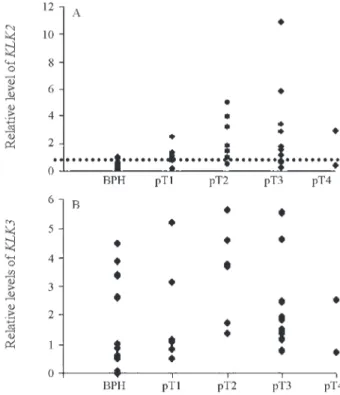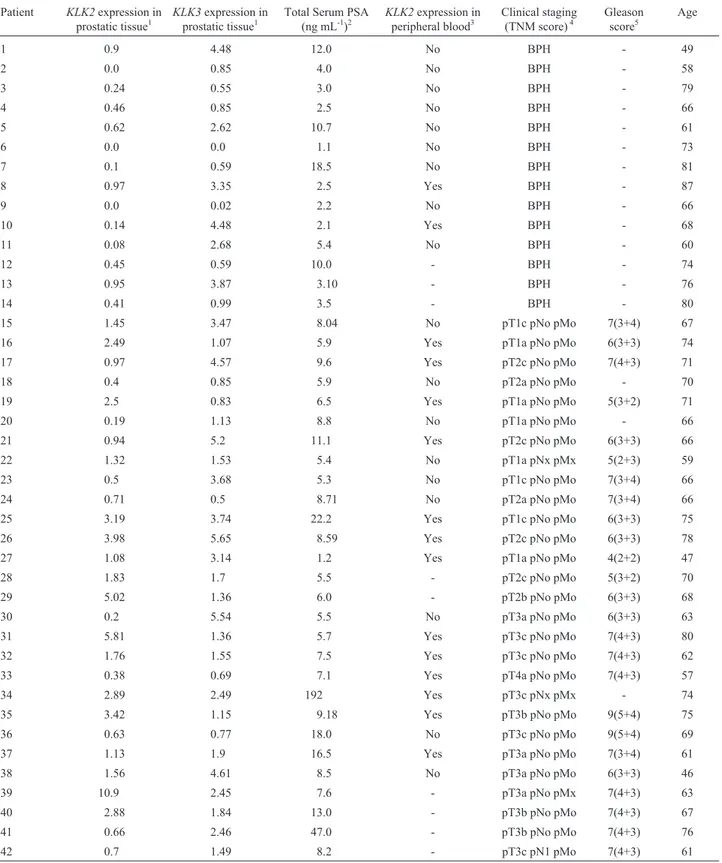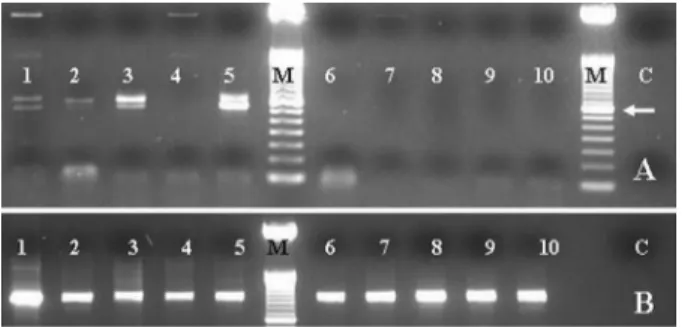Differential expression of the KLK2 and KLK3 genes in peripheral blood and tissues of patients with prostate cancer
Texto
Imagem



Documentos relacionados
Gene expression analysis of SSTR subtypes in primary prostate cancer tissues versus normal adjacent prostate tissues shows increased SSTR4 (p = 0.0236) and confirms lower
This meta-analysis suggests that the polymorphism rs198977 of KLK2 was associated with susceptibility of prostate cancer in Caucasian and the allele T might increase the risk
In this study, prostate cancer was located only in the anterior apex in 3 (3.2%) of the 95 patients who were diagnosed with prostate cancer by 6-core biopsy and 12 (25%) of the
Purpose: To retrospectively determine the accuracy of diffusion-weighted (DW) magnetic resonance (MR) imaging for identifying cancer in the prostate peripheral zone (PZ)
Effect of dutasteride on prostate biopsy rates and the diagnosis of prostate cancer in men with lower urinary tract symptoms and enlarged prostates in the combination of avodart
To characterize the expression profile of androgen receptor target genes in prostate cancer cells, we used expression microarray analysis on the PC346 cell line panel incubated with
42 The presentation concluded that ADT is associated with an increased risk of CV events; however, the GnRH antagonist degarelix may be a promising drug, ofering increased
Silvers et al., “Selective expression of CD44, a putative prostate cancer stem cell marker, in neuroendocrine tumor cells of human prostate cancer,” The Prostate , vol.